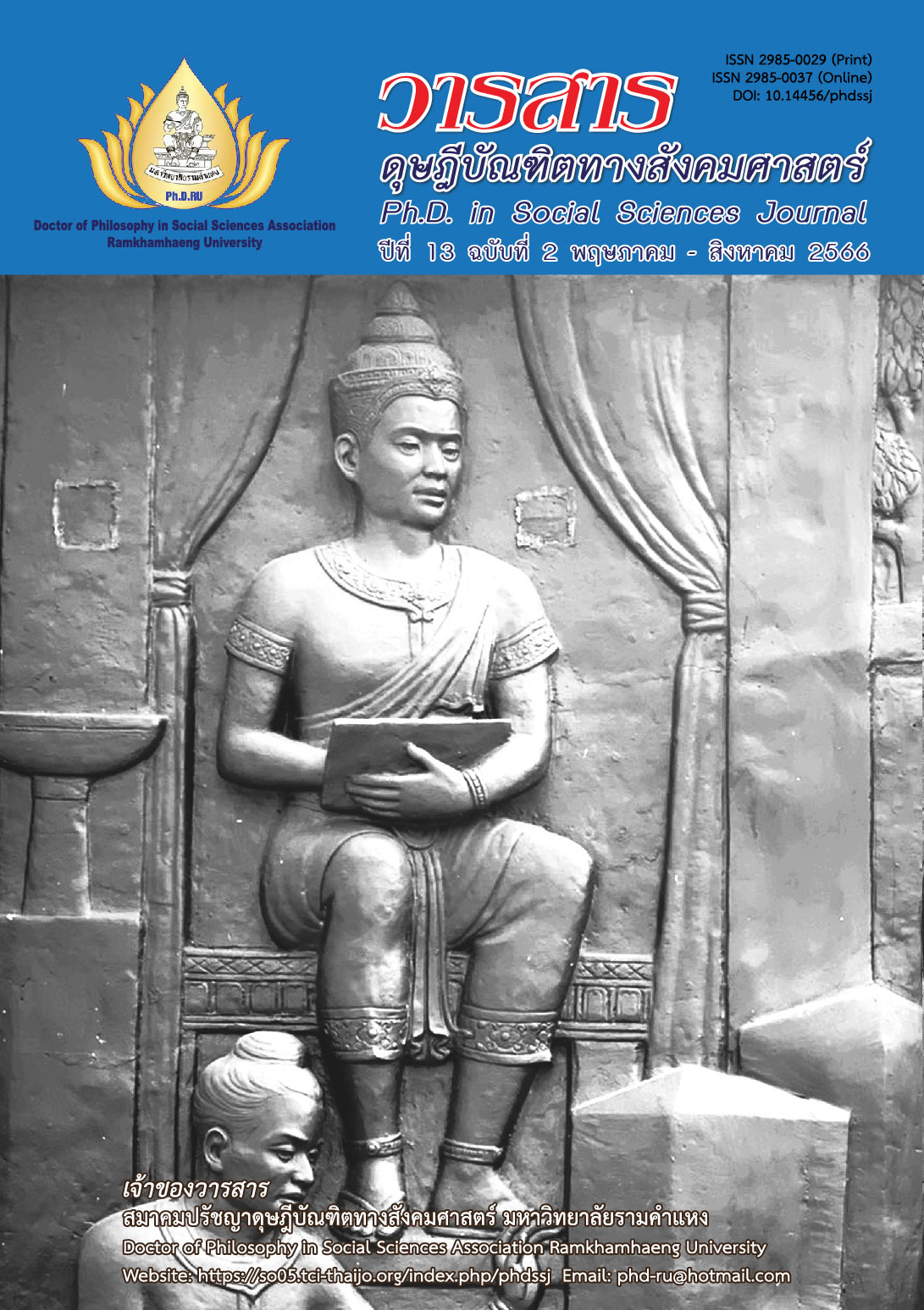An Analysis of Path Analysis Causal Relationship of Intention on Use Electronic Payment Technology (E-Wallet) in Bangkok
Main Article Content
Abstract
This research article aims to study the level of perceived usefulness factor, perceived ease of use factor, and perceived convenience factor that affect the trust that influences the intention to use electronic payment technology. This research is quantitative research. The sample group was 400 consumers who had used electronic payment technology (E-Wallet) in Bangkok. The statistics used for data analysis were percentage, mean, and standard deviation. The statistics used Pearson’s correlation coefficient, confirm factor analysis, and path analysis.
Findings are as follows: The perceived usefulness factor had a positive relation to the trust factor with a level of significance of .05, path coefficient of 0.673, and perceived ease of use factors had a positive influence on the trust factor with a level of significant of .05, path coefficient 0.693 and perceived convenience factor had positive influence on Trust factor with a level of significant of .05, path coefficient 0.707. The trust factor was the direct factor that influenced on intention to use electronic payment technology (E-Wallet) with a level of significance of .05, and a path coefficient of 0.742. As a result, the variables in the model can explain the variability in the intention to use electronic payment technology (E-Wallet) 54 percent.
Article Details

This work is licensed under a Creative Commons Attribution-NonCommercial-NoDerivatives 4.0 International License.
Academic articles, research articles, and book reviews in the Ph.D. in Social Sciences Journal are author’s opinions, and not the publisher’s, and is not the responsibility of the Ph.D. in Social Sciences Journal Philosophy Association, Ramkhamhaeng University. (In the case that research is done on human, the researcher has to be trained in Ethics for Doing Research on Human Training and has to produce the evidence of the training).
References
Ajzen, I., & Fishbein, M. (1980). Understanding attitudes and predicting social behavior. Prentice Hall.
Bhatt, V., Ajmera, H., & Nayak, K. (2021). An empirical study on analyzing a user’s intention towards using mobile wallets: Measuring the mediating effect of perceived attitude and perceived trust. Turkish Journal of Computer and Mathematics Education, 12(10), 5332-5353.
Boonsiritomachai, W., Sud-On, P., & Manosuthi, N. (2021). Increasing continual intention to use mobile payment through a half-price subsidy campaign. Modern Management Journal, 19(2), 35-47. [In Thai]
Davis, F. D. (1985). A technology acceptance model for empirically testing new end-user information systems: Theory and results. Doctoral Thesis of Management, Massachusetts Institute of Technology.
Davis, J. H., Schoorman, F. D., Mayer, R. C., & Tan, H. H. (2000). The trusted general manager and business unit performance: Empirical evidence of a competitive advantage. Strategic Management Journal, 21(5), 563-576.
Dietz, G., & Den Hartog, D. N. (2006). Measuring trust inside organisations. Personnel Review, 35(5), 557-588.
Dönmez-Turan, A., & Kır, M. (2019). User anxiety as an external variable of technology acceptance model: A meta-analytic study. Procedia Computer Science, 158, 715-724.
Electronic Transactions Development Agency. (2021). Thailand internet user behavior 2021. Retrieved from https://www.etda.or.th/th/pr-news/ETDA-released-IUB-2021.aspx [In Thai]
Howard, J. A. (1994). Buyer behavior in marketing strategy (2nd ed.). Prentice Hall.
Mankijjakan, B. (2017). Structural equation model of factors influencing acceptance of government electronic payment system among elderly in Bangkok. Master’s Thesis of Arts (Communication Arts and Innovation), National Institute of Development Administration. [In Thai]
Morgan, R. M., & Hunt, S. D. (1994). The commitment-trust theory of relationship marketing. Journal of Marketing, 58(3), 20-38.
Mpinganjira, M. (2018). Precursors of trust in virtual health communities: A hierarchical investigation. Information & Management, 55(6), 686-694.
Nunnally, J. C. (1978). Psychometric theory. McGraw-Hill.
Park, C. L. (2010). Making sense of the meaning literature: An integrative review of meaning making and its effects on adjustment to stressful life events. Psychological Bulletin, 136(2), 257-301.
Schumacker, R. E., & Lomax, R. G., (2010). A beginner’s guide to structural equation modeling (3rd ed.). Lawrence Erlbaum Associates.
Seiders, K., Berry, L. L., & Gresham, L. G. (2000). Attention, retailers! How convenient is your convenience strategy?. MIT Sloan Management Review, 41(3), 79-90.
Simakhajornboon, P., & Silpapinun, S. (2022). Factors affecting the intention to pay for goods or services though the true money wallet application. Veridian E-Journal, Silpakorn University, 11(3), 3104-3120. [In Thai]
Teo, T. S., Lim, V. K., & Lai, R. Y. (1999). Intrinsic and extrinsic motivation in Internet usage. Omega, 27(1), 25-37.
Upapong, P. (2017). Determinants of intention to use mobile financial services systems in Thailand. Srinakharinwirot Research and Development (Journal of Humanities and Social Sciences), 9(18), 96-119. [In Thai]
Wang, Y., Yuan, Y., Turel, O., & Tu, Z. (2015). Understanding the development and diffusion of mobile commerce technologies in China: A biographical study with an actor-network theory perspective. International Journal of Electronic Commerce, 19(4), 47-76.
Yadav, M. P., & Arora, M. (2019). A Study on impact on customer satisfaction for e-wallet using path analysis model. International Journal of Information Systems & Management Science, 2(1), 1-4.
Yoon, C., & Kim, S. (2007). Convenience and TAM in a ubiquitous computing environment: The case of wireless LAN. Electronic Commerce Research and Applications, 6(1), 102-112.
Zhou, T. (2013). An empirical examination of continuance intention of mobile payment services. Decision Support Systems, 54(2), 1085-1091.


